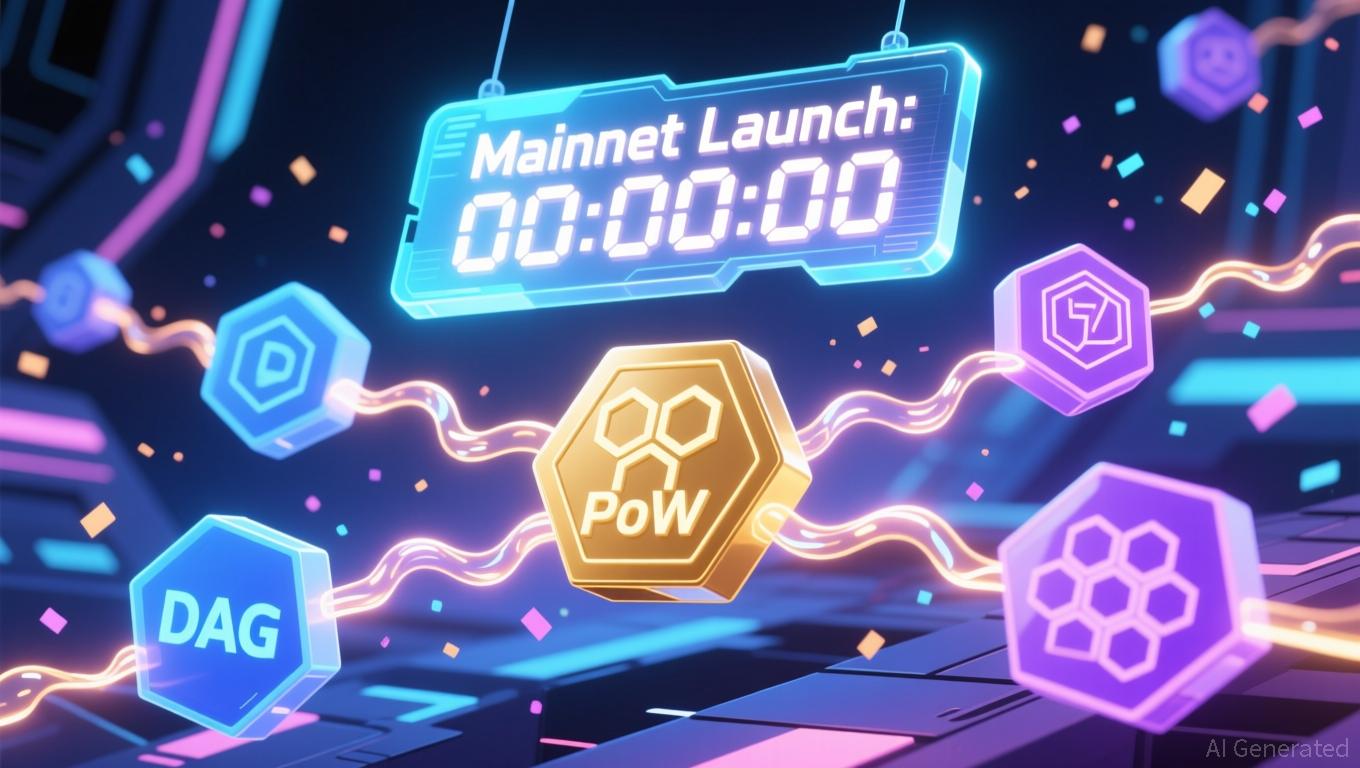Ethereum Updates Today: MegaETH's $1 Billion Funding Failure Highlights Blockchain Scaling Challenges
- MegaETH canceled its $1B fundraising after technical failures caused unintended deposits and operational chaos during the pre-deposit phase. - KYC system errors and premature execution of a multisig transaction led to $500M in deposits, forcing the team to freeze the raise and abandon expansion plans. - Critics highlighted preventable engineering flaws, with 259 duplicate addresses raising concerns about bot activity and unfair allocation practices. - Despite backing from Vitalik Buterin and Joe Lubin, t
MegaETH Halts $1 Billion Fundraising After Setbacks
MegaETH, a prominent layer-2 protocol on Ethereum, has called off its ambitious $1 billion fundraising initiative following a series of technical mishaps during its deposit phase. The project’s initial goal to gather $250 million in early deposits unraveled on November 25, 2025, when configuration mistakes and an incorrectly executed multisig transaction resulted in unintended deposits. This forced the team to freeze the campaign at $500 million and abandon plans for further expansion, as reported by multiple sources.
The incident has triggered widespread backlash, with both users and developers pointing to critical operational lapses that have undermined confidence in the project.
Event Marred by Technical Failures
The round was designed to grant verified participants early access to MEGA token allocations. However, the process quickly fell apart. A malfunction in MegaETH’s KYC system—caused by rate-limiting issues with their partner Sonar—prevented many legitimate users from completing verification.

At the same time, a Safe multisig transaction—intended to be used later to raise the deposit cap—was mistakenly executed ahead of schedule. This allowed deposits to rapidly exceed the $250 million limit within minutes. The team later acknowledged that users exploiting the website managed to take advantage of a random opening, further escalating the situation, according to various analyses.
Conflicting Responses and Community Backlash
In response to the chaos, MegaETH’s team made several inconsistent changes to the deposit cap, first increasing it to $400 million, then $500 million, before ultimately suspending the process altogether. The project assured participants that no funds were ever at risk, but conceded that the experience fell short of acceptable standards. A withdrawal mechanism is being developed for those affected, and refunds will still be counted toward future MEGA token rewards. The team has also promised a detailed post-mortem and improvements to multisig management to avoid similar issues in the future.
Industry Reaction and Ongoing Concerns
The crypto community has responded with sharp criticism. Developer and DAO founder AzFlin argued that the problems could have been avoided with stricter engineering protocols. Meanwhile, blockchain analyst Melkor.eth pointed out irregular deposit activity, noting that 259 duplicate addresses among 4,869 deposits suggested possible bot involvement and unfair distribution. These findings have intensified doubts about MegaETH’s transparency, despite the project’s recent success in a separate MEGA token auction that raised $1.3 billion in October.
Looking Ahead: Challenges and Ambitions
Despite these hurdles, MegaETH continues to be a significant player in the Ethereum layer-2 landscape, aiming to achieve 100,000 transactions per second with sub-millisecond latency. Supported by notable figures such as Vitalik Buterin and Joe Lubin, the project is preparing to introduce its USDm stablecoin—developed using Ethena’s technology—to lower transaction costs and enhance efficiency. Nevertheless, the recent deposit debacle highlights the complexities of scaling blockchain infrastructure while maintaining reliability and meeting high expectations.
As MegaETH charts its future course, this episode stands as a warning for other emerging protocols. Striking the right balance between innovation and operational discipline will be essential, especially as competition within the Ethereum layer-2 sector grows fiercer. The project’s ability to restore trust and deliver a stable mainnet launch will ultimately determine whether it can overcome its turbulent beginnings.
Disclaimer: The content of this article solely reflects the author's opinion and does not represent the platform in any capacity. This article is not intended to serve as a reference for making investment decisions.
You may also like
XRP News Today: IMF Cautions That Tokenized Markets Could Face Collapse Without International Cooperation
- IMF warns tokenized markets risk destabilizing flash crashes due to rapid growth and interconnected smart contracts. - XRP highlighted as potential cross-border payment solution but not endorsed, alongside Stellar and Bitcoin-Lightning hybrid models. - Global regulators intensify oversight of tokenized assets, with ESMA, SEC, and central banks addressing governance and liquidity risks. - IMF stresses urgent need for coordinated policy frameworks to prevent fragmentation and systemic vulnerabilities in ev

Solana News Today: Avail's Nexus Mainnet: A Borderless Blockchain Ecosystem
- Avail launches Nexus Mainnet, a cross-chain infrastructure unifying liquidity across Ethereum , Solana , and EVM-compatible chains. - The platform uses intent-solver architecture and Avail DA verification to replace bridges, enabling seamless asset movement and shared liquidity. - Integrations with major chains and partners like Lens Protocol aim to streamline DeFi and trading, while $AVAIL token coordinates cross-chain transactions. - With Infinity Blocks targeting 10 GB blocks, Nexus addresses liquidit

Cardano News Today: ETFs Turn to Alternative Coins While ADA Stumbles and XLM Gains Momentum with ISO Compliance
- Franklin ETF expands holdings to include ADA , XLM, XRP , and others, reflecting institutional altcoin diversification driven by ISO 20022 compliance and SEC-approved rules. - Cardano faces short-term bearish pressure with 31% monthly decline, contrasting Stellar's bullish 2025/2030 price projections ($1.29–$6.19) fueled by RWA and cross-border payment demand. - ISO 20022 adoption (97% payment instructions) positions ADA/XLM as bridges between DeFi and traditional finance, with Ripple's ILP enhancing XLM
AI Crypto Faces a Pivotal Turn: Regulatory Demands Surpass Aspirations in 2025
